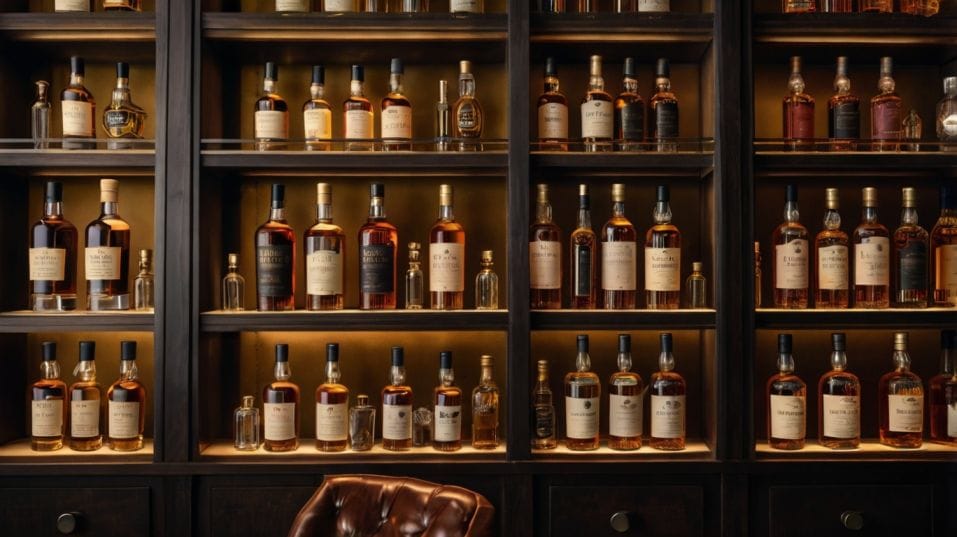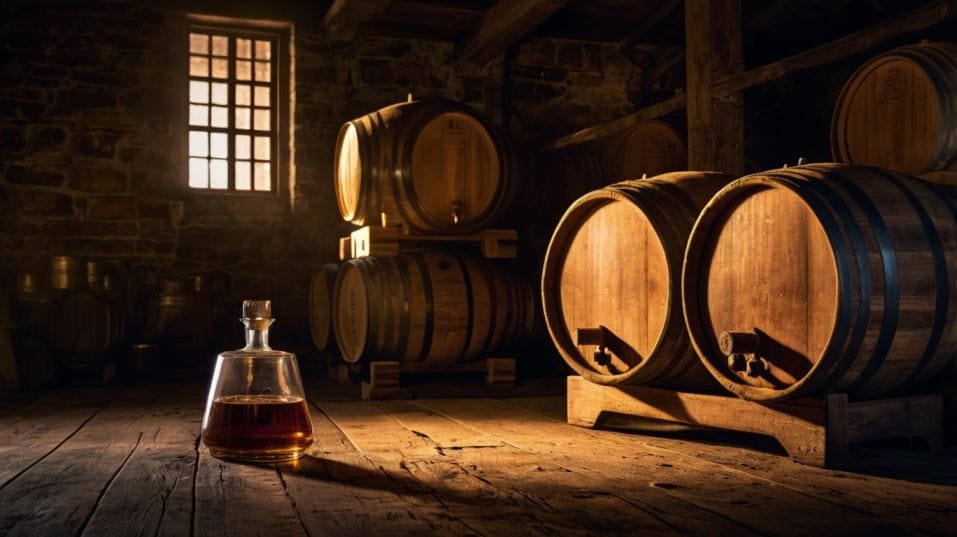What Makes a Bottle Go Up in Value?
Discover what truly drives a whiskey’s long-term value—beyond hype, age, or rarity. Learn to collect and taste with skill, not guesswork.

Why do some bottles become legends while others fade into the background? If you're new to whiskey but ready to dive deeper, value can feel mysterious.
It's not just about price, age, or hype. The real drivers of long-term worth are more complex—and more rewarding to uncover.
Start asking sharper questions, and you'll begin to see what makes a bottle collectible, memorable, and truly worth the hunt.
It’s Not About the Hype—It’s About the Why
Look past the headlines and hashtags. If you're collecting for more than just clout, the first thing to understand is intent. Why was this whiskey made?
Who made it, how, and for what purpose? High-value bottles almost always come from producers who make deliberate choices—sometimes risky ones—based on flavor, process, and legacy, not short-term trends.
A one-off cask that reflects a specific climate, warehouse position, or distillation tweak can have serious long-term value—not because it was hyped up online, but because it was grounded in a specific moment and can’t be recreated.
Intent gives a whiskey its backbone. Without that, it’s just liquid chasing attention. If you're going to collect seriously, learn to read between the lines of a release.
Understand the difference between a marketing-driven “limited edition” and a bottling that actually took years of planning, aging, and tasting to justify.
One disappears fast. The other sticks around in collector conversations long after the shelves are empty.

Rarity Without Character Is Just Noise
Scarcity is easy to fake. Value isn’t.
Yes, a bottle that only had 200 units released is technically rare. But if the whiskey doesn’t back it up—if it’s thin, disjointed, or forgettable—who cares?
Long-term value only holds when flavor, story, and scarcity all align. That’s why collectors don’t just chase short-term shortages—they chase meaningful rarity.
Meaningful Rarity vs Manufactured Shortage
Ask yourself: Is this a one-off single cask from a great year? A bottling from a closed or mothballed distillery?
A final batch before a production method changed? These are the kinds of things that give a bottle real scarcity, tied to a context that can’t be repeated.
Over time, you'll develop a nose for false scarcity. You’ll see through the shiny labels and flashy press releases. And you’ll start recognizing bottles that are rare because they had to be, not because someone wanted to create artificial demand.
Flavor First, Always
Flavor is the final judge. No matter how rare or storied a whiskey is, it has to deliver in the glass. The value curve almost always follows the flavor curve—just with a lag.
That’s why some bottles that went under the radar on release later become cult favorites. They weren’t loud. They were just good.
High-value whiskeys typically show depth, structure, and a kind of layered complexity that holds up over repeat tastings.
They age well—sometimes even in the bottle. They shift and evolve as they breathe. They linger, not just on the palate, but in memory.
Tasting Beyond Popularity
Learning to identify that kind of quality takes time and intention. Taste widely. Taste blind, when you can. Take notes.
Develop a vocabulary for what you’re sensing—tannin, weight, spice structure, fermentation funk, estery brightness. Don’t chase what’s popular. Chase what’s remarkable. That’s the kind of liquid that holds value.
Age: Necessary but Not Sufficient
A lot of beginners fall into the age trap. It’s easy to assume that more years means more quality, and more quality means more value.
But the real equation is more nuanced. Some spirits bloom young. Others fall apart after too much time in oak. The right age is the one that brings balance—not just more wood.
Context Is Everything
The most collectible bottles aren’t necessarily the oldest. They’re the most complete.
Sometimes that’s a twelve-year bourbon that hit just the right mash bill and barrel rotation. Sometimes it’s a twenty-year malt that still shows vibrancy beneath the oak.
Get in the habit of evaluating age in context. Look at the climate of the aging location. Study the barrel type. Pay attention to proof. A well-aged whiskey isn’t just old—it’s mature. That difference is subtle, but critical.
Provenance Is Power
Where a whiskey comes from matters. Provenance isn’t just geography—it’s identity. A distillery with a strong sense of place, process, and heritage tends to produce more consistent, collectible liquid.
That doesn’t mean new producers can’t make great stuff—but if they do, it’s usually because they’re serious about technique, not just image.
Craft Matters More Than Fame
Learn about still shapes, fermentation styles, warehouse design, grain sources. Track producers that are pushing technical boundaries or reviving lost methods.
A distillery using heritage grains, open-top fermenters, or direct-fired stills isn’t just being quirky—they’re building flavor profiles that can’t be copied.
Bottles tied to innovation, revival, or specific cultural moments carry more weight. And when those moments pass, the bottles that captured them tend to rise in value.
Packaging Should Whisper, Not Shout
Presentation matters, but not the way most people think. A collectible bottle doesn’t need to be flashy—it needs to be intentional. Clean labels. Useful details.
A real cork. Good glass. Thoughtful proofing. These things suggest a producer that respects the whiskey—and assumes you do too.
Signal vs Spectacle
Bad packaging can actually hurt value. Wax that cracks and crumbles. Screwtops on high-proof spirits. Gimmicky boxes that fall apart. These are signs of a brand more interested in short-term sizzle than long-term staying power.
When you see a bottle where the form matches the function—where everything from label design to bottle weight supports the quality inside—it’s a quiet but powerful signal. The best bottles don’t scream. They invite.
Collectors Think in Decades, Not Seasons
The whiskey world moves fast. Limited drops come and go. Forums light up. Then the next shiny object rolls in. Don’t get swept into the churn. If you want to collect with intention—and see real value over time—you need to zoom out.
Zoom Out, Play Long
Serious collectors think about legacy, not likes. They track producer history, aging trends, bottling decisions, and vintage shifts the way others track art or wine. They buy bottles that are grounded in craft, context, and time. Not hype cycles.
This is where you begin to shift from buying to curating. Every bottle in your collection has a reason to be there. Every bottle teaches you something. And if it gains value along the way? Even better.
Final Thoughts
Value in whiskey isn’t a formula—it’s a mindset. It’s about asking the right questions, paying close attention, and trusting your senses more than the noise.
The best bottles aren’t just expensive. They’re expressive. They mark turning points, breakthroughs, moments that matter.
So taste with more intention. Research one bottle deeper than you usually would. Revisit something you used to overlook.
Start building a collection that reflects curiosity, not consensus. Whiskey is about memory, not marketing. Start making some of your own—today.




